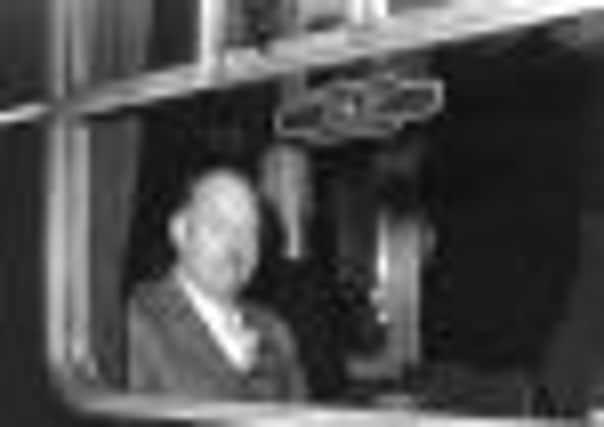450 miles of Scots railway ‘dodged Beeching axe’


Powerful political lobbying reprieved several famous lines earmarked for the axe, while a number of others which were closed have since been reopened to passengers.
In all, the Reshaping of British Railways blueprint, published on 27 March, 1963, by British Rail chairman Dr Richard Beeching, axed some 650 miles of railway in Scotland.
Advertisement
Hide AdAdvertisement
Hide AdThey included the 98-mile Waverley line between Edinburgh and Carlisle, the 73-mile Dumfries-Stranraer line and the 43-mile Aberdeen-Ballater route.
However, research using maps compiled for Mapping the Railways by David Spaven and Julian Holland reveals that some 450 miles of track either escaped the axe or have been restored. Examples include the 168-mile Inverness-Wick/Thurso line and the 64-mile Inverness-Kyle of Lochalsh route, along with the 76-mile Ayr-Stranraer line.
The impact of Beeching has also been offset by several lines being reopened, such as Airdrie-Edinburgh via Bathgate, Ladybank-Perth and an east-west suburban line through Glasgow Central station.
Other reopenings include Stirling-Alloa, Glasgow-Paisley Canal and Glasgow to Whifflet in Lanarkshire.
These are due to be followed in 2015 by the restoration of 30 miles of the Waverley line between the edge of Edinburgh and Tweedbank. Success for the £350 million project could intensify pressure for other closures to be reversed, with calls for the Aberdeen-Peterhead route to be rebuilt.
Charles Loft, author of Last Trains – Dr Beeching and the Death of Rural England, said: “It is obvious that Scottish opposition to closures was a major factor in halting the programme before it got anywhere near its implied target of a 5,000-mile [GB] passenger network … The Scottish secretary and the Scottish Conservatives were appalled by the proposals and their impact on the Conservatives’ electoral chances in 1964.”
Chris Austin, co-author with Richard Faulkner of Holding The Line: How Britain’s Railways Were Saved, said of the lines reprieved in Scotland: “The influence of Scottish ministers ensured that closures were virtually halted well before those in England and Wales.”
Modern Railways magazine today publishes Mr Spaven’s assessment of the “worst” Beeching closures, with the table topped by the Waverley line, which closed in 1969.
Advertisement
Hide AdAdvertisement
Hide AdThe Edinburgh-based rail consultant ranked the Dumfries-Stranraer line as fourth equal, the Aberdeen-Fraserburgh route sixth equal and Perth-Forfar-Kinnaber junction line, near Montrose, as ninth equal.
His analysis was based on the length of line closed, the population of the affected towns and their distance from the rail network, and the “strategic connectivity” of the route lost.